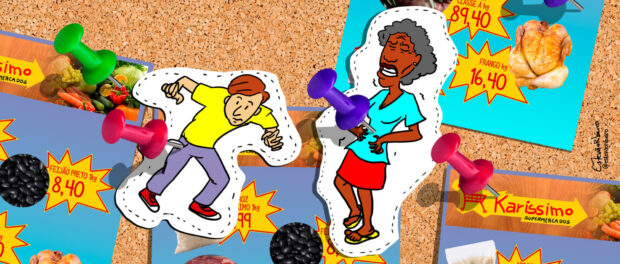
Clique aqui para Português
Even though Brazil is one of the largest food producers in the world, the social and political economics of hunger were a key theme in the 2022 elections. According to a survey by the Brazilian Research Network on Food and Nutrition Sovereignty and Security (Rede Penssan), millions of people are going without food.
Before the pandemic, it was maybe possible to turn a blind eye to hunger in the streets or in newspaper reports; now there is no way of avoiding the reality. There are people experiencing hunger across all parts of cities, in the big urban centers and the peripheries, inside and outside homes, and even in the countryside. The proposals of the presidential candidates were therefore crucial when faced with a hunger crisis so great that 33.1 million Brazilians are estimated to be going hungry, as shown in the 2nd National Survey on Food Insecurity in the Context of the Covid-19 Pandemic in Brazil (II Vigisan).
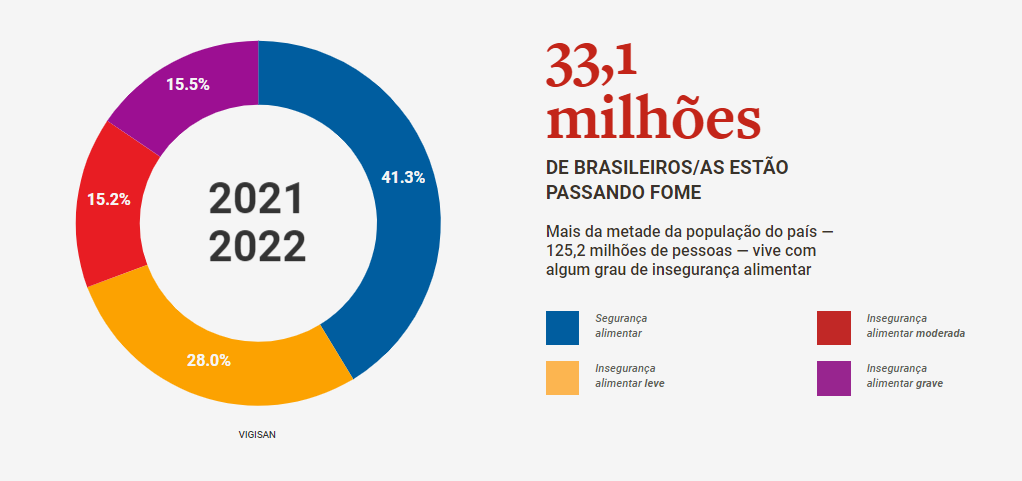
Returning to the Hunger Map
According to the 2nd National Survey on Food Insecurity in the Context of the Pandemic (Vigisan II)—which was launched in June 2022—only four out of ten Brazilian families have full access to food. “The number of households with residents experiencing hunger jumped from 9% (19.1 million people) to 15.5% (33.1 million people). There are now 14 million more Brazilians living in a situation of hunger in a little over a year,” the report reveals.
In 2022, Brazil returned to the United Nations’ Hunger Map, after an eight year absence from the list. The survey considers a lack of food as chronic when an average of over 2.5% of the population is facing hunger. In Brazil, an estimated 4.1% of its 215 million inhabitants were estimated to be experiencing hunger.
The global report of the Food and Agriculture Organization (FAO)—an agency part of the UN—indicates that over 60 million Brazilians face difficulties getting food. Hunger in Brazil has regressed to 1990 levels, becoming structural—or chronic—again. But what do these hunger numbers actually mean?
What is Hunger?
When RioOnWatch reached out for accounts of what it’s like to feel hungry, we were careful to interview people who have previously experienced hunger, but who are not currently in a situation of food insecurity, due to the psychological suffering associated with it. Even so, in total, of 14 people contacted for this article, only three agreed to share their stories.
A young favela resident from Rio de Janeiro—who has not experienced hunger herself—asked her mother to give a personal testimony for the article, but her mother told her that she could not bear to even think about talking about hunger, “because her body ached and her flesh trembled.”
A resident of the Maré complex of favelas in Rio’s North Zone, Kananda Ferreira, 25, describes hunger as something that “makes you forget that you have a soul and [believe that] you are not worthy of the dignity [of eating]. It stops you existing because your body is not well, along with other agonies. It’s inhumane, cruel and devastating.”
A solo, unemployed mother, she recalls the few times she went hungry “with my son complaining his belly hurt.” Besides hunger, she has experienced food insecurity, having to decide in front of a supermarket scale “between buying chicken or eggs for lunch and dinner.” And she concludes: “It hurts me to think that there are women living in worse situations than mine, all suffering in different ways for the same reason.”
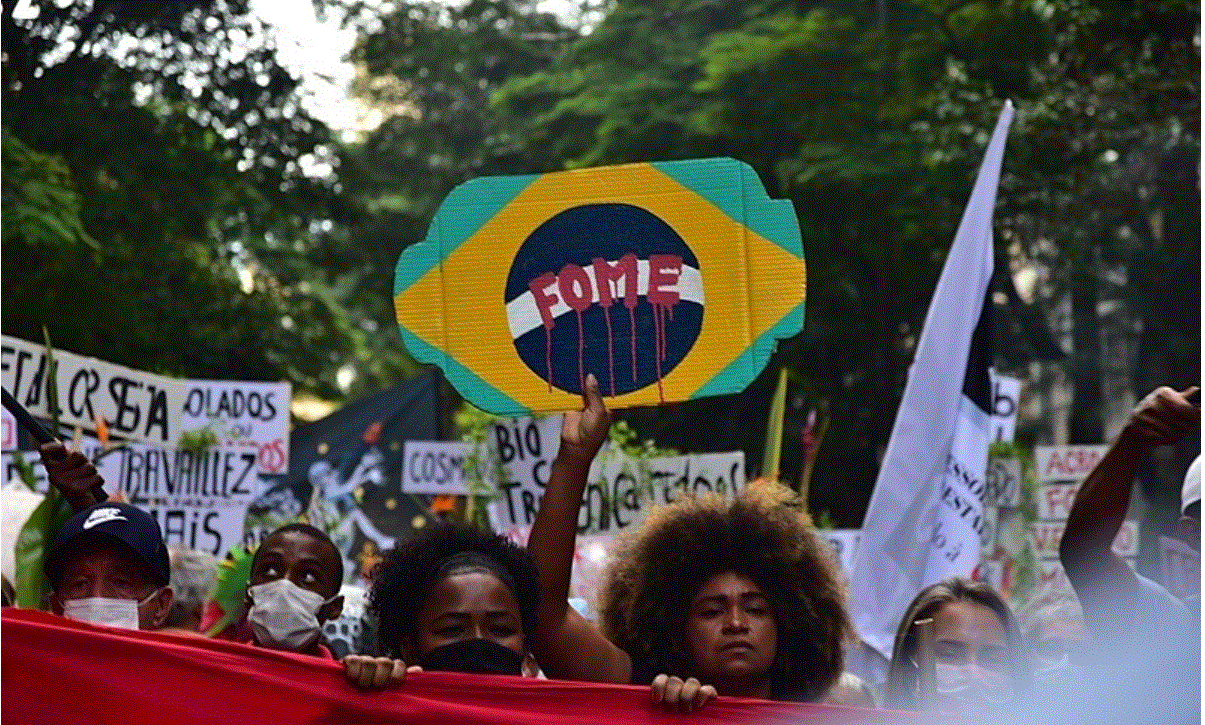
Journalist and social cause marketer Tassia Di Carvalho, 36, confided that she experienced hunger in her childhood and extreme vulnerability as an adult. “Feeling hungry for me was desperate because I was a child and would have eaten anything, but I didn’t have it. I had an extreme emptiness [in my stomach] and I felt a pain that was much greater than when I had gallstones. I would go two, three days without anything to eat, drinking water compulsively.”
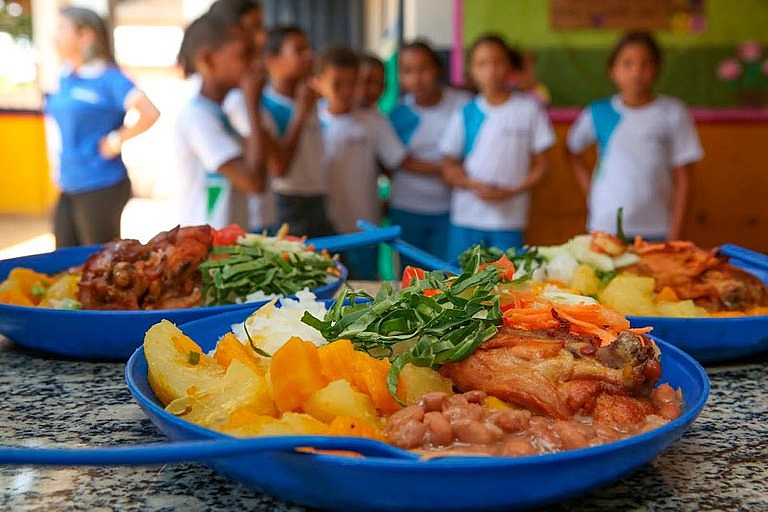
A black woman who lives in the North Zone neighborhood of Riachuelo, Di Carvalho says that she even fainted at school once because she was hungry. The “hard-line” school inspector who helped her asked: “Didn’t you have any breakfast today?”
“I was really embarrassed and said I’d left home late. She realized that I didn’t have anything to eat, so she took me to the cafeteria. After that, she talked to the principal and they permitted a second snack for the students, so we could get to school and have breakfast, and then go to class and have a snack at snack time. I think they had no idea how big a demand there would be for that, but the line was packed every day with kids who didn’t have enough to eat at home… It’s strange because today people see me as being relatively successful and they can’t imagine everything I’ve been through,” says Di Carvalho.
Her story reveals more than hunger. It demonstrates how Brazilian public schools can be a key player in the fight against hunger. However, during the coronavirus pandemic, schools were closed. In the city of Rio alone, adding up the two school systems, municipal and state, 818,800 students were deprived of an education for two school years.
“I usually say that public schools satisfy different types of hunger: they satisfy the hunger for food, for knowledge, and for culture. That’s why the right to public education in Brazil, with diversity and plurality, is so very necessary. Especially in the favelas. With the schools closed due to the pandemic, the right to education and food security, both for children and adults—since we also hold classes for young people and adults—was threatened. Nobody learns anything on an empty stomach,” explains Pollyana da Silva*, a teacher from Rio de Janeiro’s public education networks.
She then adds: “There are many reports of families who don’t have enough to eat at home. It’s not easy to deal with this, because the school is open from Monday to Friday, but not on weekends. Students have been eating seconds more often, because they’re hungry. Often the only breakfast and the only full meal they’ll have is at school. At this moment, the school needs to satisfy this hunger: the hunger for food. Especially in areas like the favelas, it is the only state institution that remains strong within these communities.”
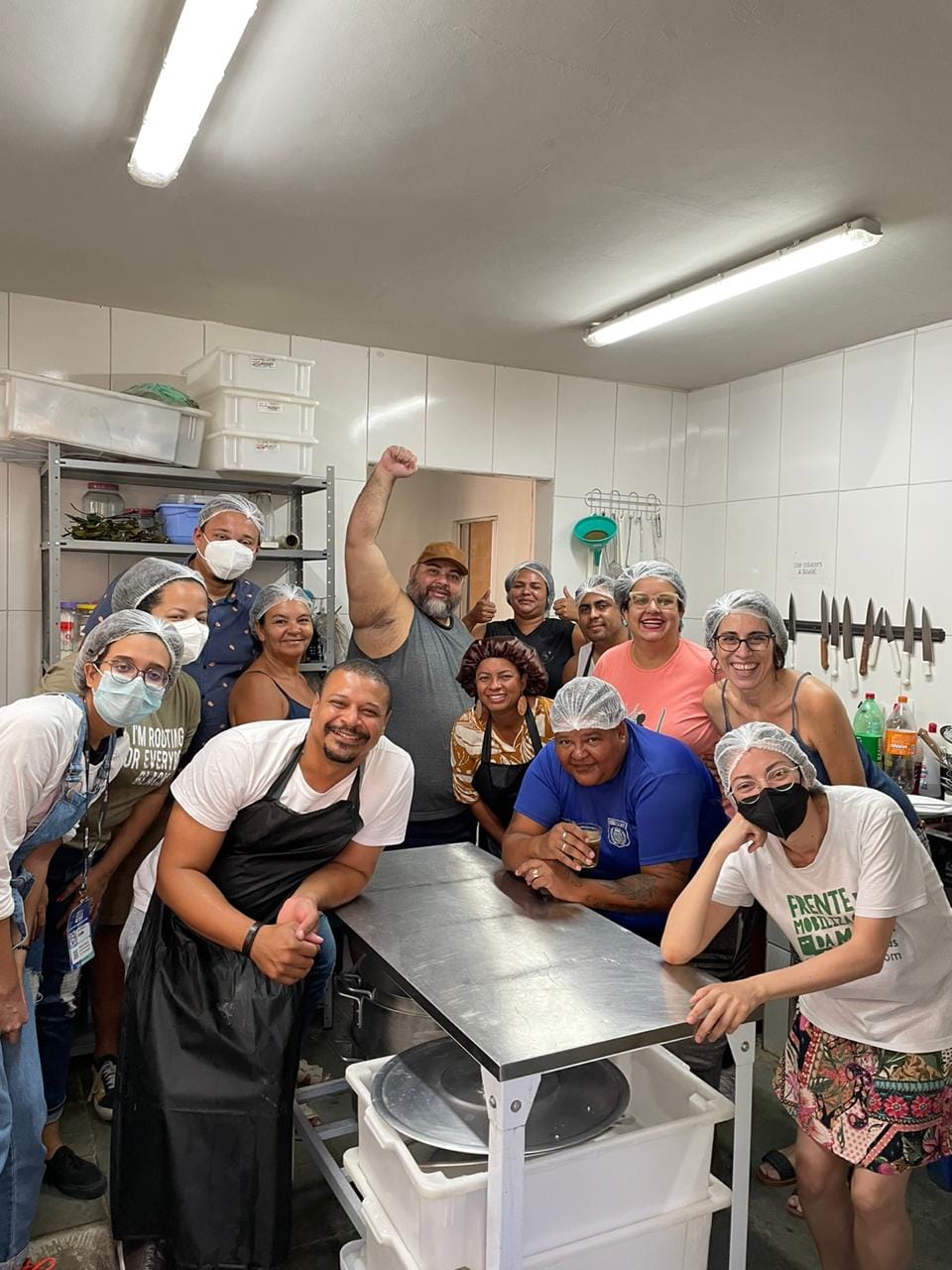
Gizele Martins, 36, a grassroots communicator and journalist, also reveals that she went hungry when her mother died:
“She left behind five young children. It was a very difficult time. My family was enormously impacted… Feeling hungry is definitely a moment where you question your own dignity, you feel the abandonment of the State in your own skin.”
Martins is a member of the Maré Front, one of the community projects in Rio’s favelas created to fight hunger during and after the coronavirus pandemic. Unfortunately, alongside other emergency initiatives created by favela residents in response to hunger, the Maré Front does not receive any support from public authorities. Martins finishes by saying that the existence of hunger demonstrates how the violation of rights and the ignorance of human dignity are common processes for a “certain people that, in this case, are always the same ones that experience these situations: favela residents, black people, the rural population.” The journalist highlights that in Brazil, hunger has a color and social class.
It is also important to recall that hunger also has a gender: it disproportionately affects women. Therefore, we cannot forget that when we talk about hunger, we must also consider policies specifically directed towards black women in situations of socioeconomic vulnerability.
Citizenship Only on Paper
The writer Carolina Maria de Jesus, in her classic book Child of the Dark, explicitly states that: “The ones who invented hunger are the ones who eat.” Hunger—which Carolina and her children experience throughout the book—is the protagonist (or rather, antagonist) of the daily life she describes in her diaries, first published in 1960.
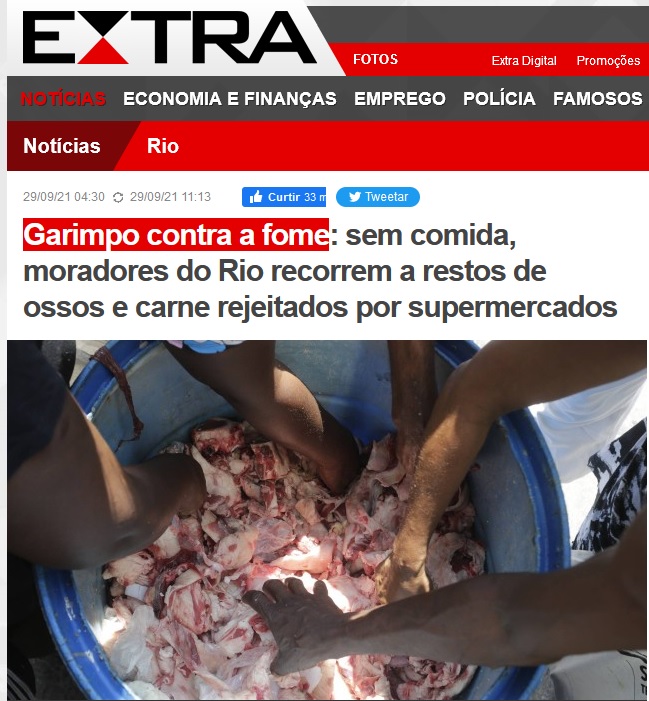
Now, over 60 years after the writer’s comments, the harsh reality of structural hunger returns to the headlines of the main Brazilian media outlets as a political topic. On September 29, 2021, the newspaper Extra published the article Scavenging to Beat Hunger and printed the image of a truck on the front page with bones and meat scraps that had been disposed of by a supermarket being “distributed” to people in need, in the neighborhood of Glória, in the South Zone of Rio de Janeiro.
According to the Penssan Network study, chronic hunger occurs when food availability is irregular. It can be divided into three levels: mild (uncertainty about food access in the near future), moderate (insufficient quantity of food), and severe (deprivation of food).
Structural, severe or chronic hunger is a state of long-term and constant malnutrition. In this situation, one often lives from meal to meal, unsure of when the next meal will be. Because it is ongoing, the individual does not have enough energy to maintain a healthy body and thus struggles to perform daily activities.
Therefore, when considering hunger, “it is important to understand that each absolute number represents one person’s life. Each of the changes in percentages of food insecurity—however small they may seem—means, in effect, that millions of people are now living with hunger on a daily basis,” highlights the Look at Hunger website.
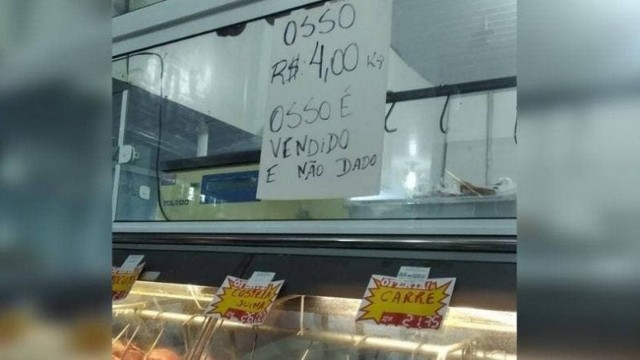
Hunger still directly drives a “hunger economy.” During the pandemic, Brazilian supermarkets, with the strategy of “lowering costs” and encouraging purchases, began to sell animal bones and carcasses, which was not previously common in the country.
“Bones are sold and not given away,” reads a sign at the meat counter of a supermarket in the state of Santa Catarina.
Brazil’s return to the Hunger Map brings back the feeling of a country of citizens just on paper, a term coined by journalist Gilberto Dimenstein. Published in the early 1990s, the book presents Brazil as a country of enormous social contrasts and inequalities, despite being one of the largest economies in the world. Based on the Universal Declaration of Human Rights and all the modern legal codes that govern the country, the book illustrates how Brazil is unable to overcome social inequality and the terrible distribution of income.
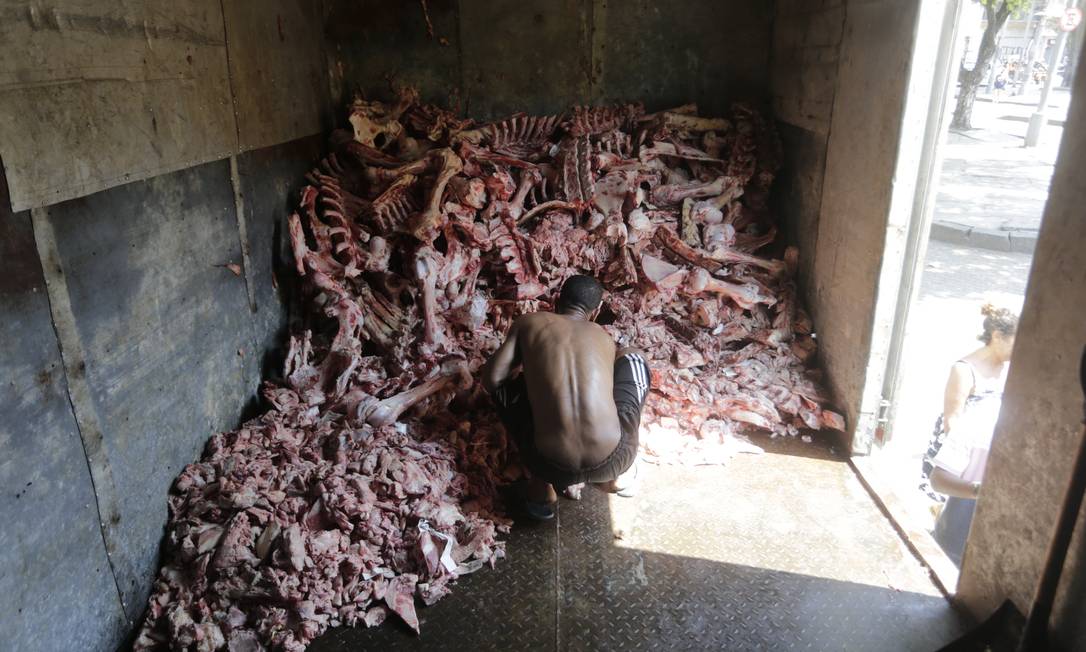
If a Brazil without hunger was an unattainable goal in 1990, its omission from the World Hunger Map in 2014 showed how it is achievable through public policies. Between 2004 and 2013, according to the 2nd National Survey on Food Insecurity in the Context of the Covid-19 Pandemic in Brazil, public policies to eradicate extreme poverty were created and reduced hunger to less than half of the initial rate, from 9.5% to 4.2%.
Fighting Hunger: What Lula Plans to Do About It
Tackling food insecurity must be a central issue for Lula’s government starting in January 2023. Below we summarize Lula’s plans to combat structural hunger.
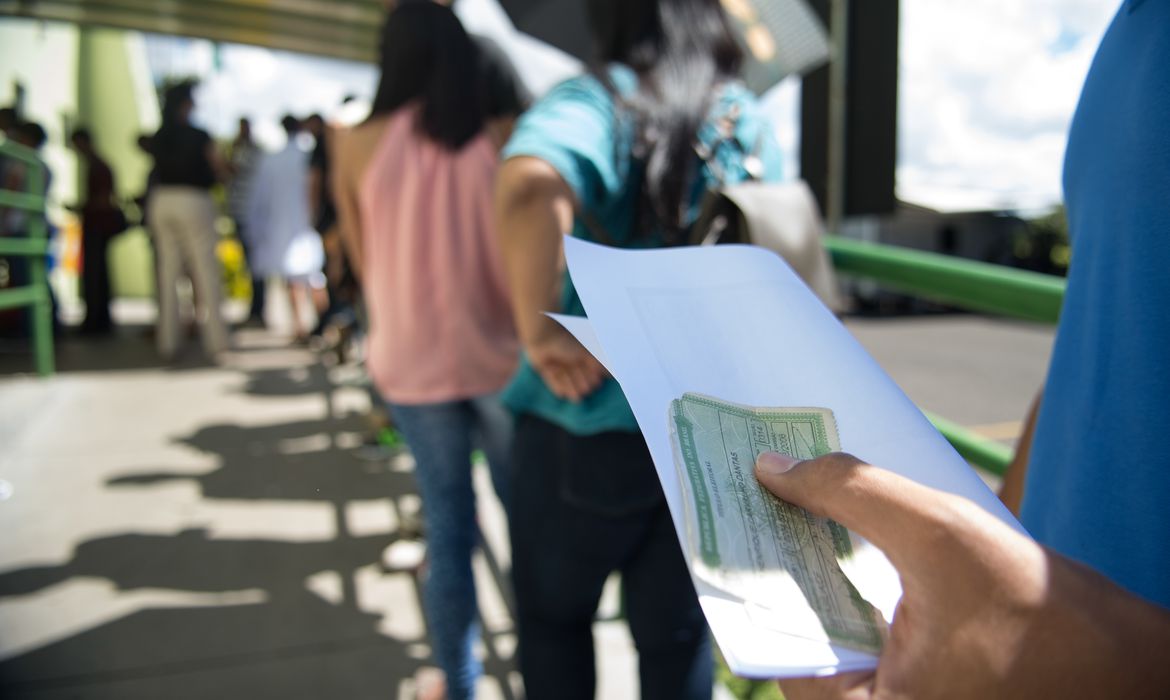
Lula‘s government plan states that the those going hungry have a priority in the commitments made by his political party. His plan lists its commitment to: reducing inflation, strengthening state-owned companies, and confronting poverty and hunger. It emphasizes the proposal of a minimum wage with guaranteed increases above inflation every year and the payment of a R$600 (US$112) Bolsa Família monthly family grant stipend to the most vulnerable, with an extra R$150 (US$28) given to families for each child under six years old.
To achieve this, Lula explains that he will prioritize tackling rising prices. The former and returning president argues that agricultural production in the countryside is a way to achieve food security and believes that the State plays a vital role in reducing poverty and promises to rebuild and strengthen social programs. He plans to repeal the 2016 spending cap rule approved by then-president Michel Temer. Lula’s proposals also highlight the importance of giving support to “small and medium-sized farms, especially family farms” and indicate a commitment to food sovereignty.
About the artist: Estevão Ribeiro is a writer, illustrator and screenwriter. He is the author of the anti-racist comic strip Rê Tinta, published on Instagram @renatatinta.
*Pseudonym
